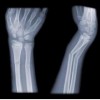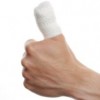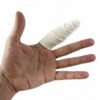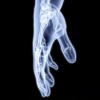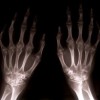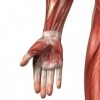Hand & Wrist
A forearm fracture is a term for a break in the ulna and or radius bones in the forearm. Forearm fractures are most commonly seen in both the older and younger population and are normally the result of a crush trauma like a car accident or high impact from falling onto an outstretched hand.
The trauma causes a very intense immediate sharp pain around the fracture site this pain can radiate up into the upper arm, elbow and down into the wrist and hand. The fracture is often accompanied by swelling and bruising and aggravated by most arm or hand movements this makes weight bearing or lifting with the effected hand excruciating.
A dislocated Thumb is the medical term used when the ligaments of the thumb (1st phalange) have been injured by being overstretched or torn to the extent that the two connecting bones have become dislodged and are no longer aligned as they should be.
Symptoms include an intense immediate sharp pain around the dislocated joint accompanied by intense swelling and bruising. In some cases a tearing or snapping noise is heard during the injury and there will be visible joint deformity.
A dislocated finger is the medical term used when the ligaments of the finger (phalange) have been injured by being overstretched or torn to the extent that the two connecting bones have become dislodged and are no longer aligned as they should be.
Symptoms include an intense immediate sharp pain around the dislocated joint accompanied by intense swelling and bruising. In some cases a tearing or snapping noise is heard during the injury and there will be visible joint deformity.
Bennett's Fracture - Broken Hand
A Bennett's fracture is the term for a fracture and dislocation of the base of the thumb. They are most commonly the result of a traumatic downwards force through the thumb, normally seen in boxers and contact sports players. Symptoms include a very intense immediate sharp pain around the base of the thumb that radiates up into the forearm and across into the wrist and hand. The fracture is often accompanied by swelling and bruising around the thumb and wrist.
Rheumatoid Arthritis in the Wrist and Hand
Rheumatoid arthritis (RA) is a relatively common condition affecting three times more women than men and normally developing between the ages of 40 to 50, although it can affect people at any age. RA has the ability to develop in any joint of the body but most commonly it affects the wrists, hands, ankles and feet. It normally develops symmetrically affecting the same joint on both sides of the body.
Symptoms begin as joint and muscle stiffness, particularly in the early mornings with symptoms starting to ease 2-3 hours after getting up. After a few weeks the same joints that have been stiff may become painful and swollen. The pain will feel like a deep throbbing ache that is aggravated by rest and certain levels of activity. The swelling levels during a flare up also cause the skin around the joint to be extremely tender and slightly warm to the touch.
Wrist & Hand - Myofascial Pain Syndrome (muscle pain)
Myofascial pain (muscle pain) can result from sprains or strains of a joint, excessive repetitive movements and high stress levels. Risk factors like poor posture, fatigue, heavy lifting and even muscle weakness may make you more susceptible to myofascial pain. Specific causes like stress, normally cause quite a lot of tension in the upper back and neck which can then lead to quite bad headaches.
Symptoms range from a sudden sharp pain, spasms and burning pain to a gradual build-up of a dull ache and discomfort that is worse in the evening after long days at work or activity. Muscle knots and trigger points can cause pain to refer from the injured muscle to the surrounding areas.

